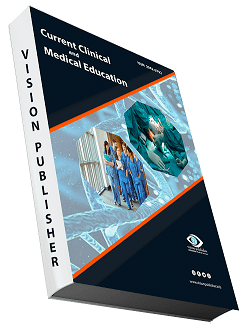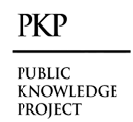Nuclear Magnetic Resonance (NMR): Principle, Applications, Types, and Uses in Metabolite Identification and Medical Biotechnology
Keywords:
NMR, Principle, Types, Applications, Medical BiotechnologyAbstract
The field and laboratory applications of nuclear magnetic resonance (NMR) for assessing the damage potential of drilling, completion, and production fluids are numerous. Enhanced oil recovery, drilling, completion, and other applications use NMR to assess emulsion droplet size and behavior in the pore space. When compared to other methods, nuclear magnetic resonance (NMR) has shown to have the most promise for advancing exploration and production in unconventional gas fields, and its usage in both laboratory and field scales allows for the evaluation of unconventional gas resources. Geosteering, logging while drilling, and other field uses of NMR in exploration and drilling were also covered. The presentation concluded with an overview of the possible future paths of NMR tool development, including the use of multi-dimensional NMR and the improvement of the signal-to-noise ratio of the data acquired during drilling operations (logging). One way to test metabolites is with nuclear magnetic resonance (NMR). This technique can pick up on things like amino acids, ketone bodies, lipoproteins, and even some inflammatory markers. Metabolic disorders like diabetes, infectious diseases, neuropsychiatric diseases like Parkinson's and Alzheimer's dementia, and the vast field of cancer are among the many areas where nuclear magnetic resonance (NMR) has found use. The discipline of NMR metabolomics is expanding rapidly as researchers work towards the ultimate aim of personalized medicine: the ability to detect diseases earlier, tailor treatments to individual patients, and track how well treatments are working. Lipoproteins in serum, for instance, can be analyzed with the help of nuclear magnetic resonance (NMR), which provides a plethora of information. Particle size and density allow for the separation and quantification of the four lipoproteins: HDL, LDL, IDL, and VLDL. There are four sizes for HDL and six sizes for LDL, for instance. Plus, you can measure the proportions of each of their parts. Phospholipids, triglycerides, apolipoproteins, cholesterol, and free cholesterol are all part of this group. An improved understanding of disease mechanisms and diagnostic accuracy can be achieved by studying lipoprotein profiles, which are changed in a variety of disorders and are crucial to metabolic activities.
Downloads
References
Ehrlich R, Howard JJ, Kenyon WE (1995) Determination of porosity types from NMR data and theirrelationship to porosity types derived from thin section. J Pet Sci Eng 13:1–14.
Brautaset A, Ersland G, Graue A, Stevens J and Howard J, (2008). Using MRI to study in situ oil recoveryduring CO2 injection in carbonates. In: Int. Symp. Soc. Core Anal. Abu Dhabi, UAE, 29 Oct. - 2 Novemb.2008 SCA paper 2008–41
Broche LM, Ross PJ, Davies GR, MacLeod M-J, Lurie DJ (2019) A whole-body fast field-cycling scanner forclinical molecular imaging studies. Sci Rep 9:10402.
Cheng Y, Chen S, Eid M, Hursan G, Ma S, (2017) Determination of permeability from NMR T1/T2 ratio incarbonates. In: SPWLA 58th annual logging symposium Coates, Marschall, D., Mardon, D., Num, R., (1997)A new char- acterization of bulk-volume irreducible using magnetic resonance. Log Anal. 39(01)
Coman R, Thern H, Kischkat T, (2018) Lateral-motion correction of NMR logging-while-drilling data. In:SPWLA 59th annual log- ging symposium 2018.
Connolly PRJ, Vogt SJ, Iglauer S, May EF, Johns ML (2017) Capillary trapping quantification in sandstonesusing NMR relaxometry. Water Resour Res 53:7917
Demas V, Prado PJ, Hürlimann MD, Song YQ, Fantazzini P, Bortolotti V, (2008) Compact magnets formagnetic resonance. In: AIP conference proceedings. AIP, pp. 36–39.
DePavia L, Heaton N, Ayers D, Freedman R, Harris R, Jorion B, Kovats J, Luong B, Rajan N, Taherian R,Walter K, Willis D, Scheibal J, Garcia S, (2003) A next-generation wireline NMR logging tool. In: All Days.SPE, Denver, Colorado, p. 7
Diehl B (2008) Principles in NMR spectroscopy. In: Holzgrabe U, Wawer I, Diehl BBT (eds) NMRspectroscopy in pharmaceutical analysis. Elsevier, Amsterdam, pp 1–41.
Freedman R, Heaton N, Flaum M, Hirasaki GJ, Flaum C, Hürlimann M (2003) Wettability, saturation, andviscosity from NMR measurements. SPE J 8:317–327.
Gamal H, Elkatatny S, Adebayo A (2021) Influence of mud filtrate on the pore system of different sandstonerocks. J Pet Sci Eng 202:108595.
Ge X, Myers MT, Liu J, Fan Y, Zahid MA, Zhao J, Hathon L (2021) Determining the transverse surfacerelaxivity of reservoir rocks: a critical review and perspective. Mar Pet Geol 126:104934.
Ghomeshi S, Kryuchkov S, Kantzas A (2018) An investigation into the effects of pore connectivity on T NMRrelaxation. J Magn Reson 289:79–91.
Elsayed M, El-Husseiny A, Kwak H, Hussaini SR, Mahmoud M (2021b) New technique for evaluatingfracture geometry and preferential orientation using pulsed field gradient nuclear magnetic resonance. SPE J.
Enwere MP, Archer JS, (1992) NMR imaging for water/oil displacement in cores under viscous-capillary forcecontrol. In: SPE/DOE enhanced oil recovery symposium. Society of Petroleum Engineers
Gladden LF, Mitchell J (2011) Measuring adsorption, diffusion and flow in chemical engineering: applicationsof magnetic resonance to porous media. New J Phys 13:035001.
Hosseinzadeh S, Kadkhodaie A, Yarmohammadi S (2020) NMR derived capillary pressure and relativepermeability curves as an aid in rock typing of carbonate reservoirs. J Pet Sci Eng 184:106593
Glorioso JC, Aguirre O, Piotti G, Mengual, JF, (2003) Deriving capillary pressure and water saturation fromNMR transversal relaxation times. In: Proc. SPE Lat. Am. Caribb. Pet. Eng. Conf. 418–430.
Hollingsworth KG, Johns ML (2003) Measurement of emulsion drop- let sizes using PFG NMR andregularization methods. J Col- loid Interface Sci 258:383–389.
Isah A, Adebayo AR, Mahmoud M, Babalola LO, El-Husseiny A (2021a) Drainage mechanisms in gasreservoirs with bimodal pores – a core and pore scale study. J Nat Gas Sci Eng 86:103652
Heaton N, Jain V, Boling B, Oliver D, Degrange J-M, Ferraris P, Hupp D, Prabawa H, Torres Ribeiro M,Vervest E, Stockden I, (2012) New generation magnetic resonance while drilling. In: All Days. SPE.
Jackson JA, Burnett LJ, Harmon JF (1980) Remote (inside-out) NMR. III. Detection of nuclear magneticresonance in a remotely produced region of homogeneous magnetic field. J Magn Reson 41:411–421
Kanfar MF, (2012) Real-time integrated petrophysics: geosteering in challenging geology and fluid systems.In:Soc. Pet. Eng. – SPE Saudi Arab. Sect. Young Prof. Tech. Symp. 2012, YPTS 2012 45–54.
Kwak HT, Wang J, AlSofi AM, (2017) Close monitoring of gel based conformance control by NMRtechniques. In: Day 2 Tue, March 07, 2017. SPE. D
Lalanne B, Rebelle M, (2014) A review of alternative methods to classify rock-types from capillary pressuremeasurements. In: All Days. IPT
Makeen YM, Shan X, Lawal M, Ayinla HA, Su S, Yelwa NA, Liang Y, Ayuk NE, Du X (2021) Reservoirquality and its control- ling diagenetic factors in the Bentiu Formation, Northeastern Muglad Basin, Sudan. SciRep 11:18442 Mitchell J, Fordham EJ (2014) Contributed Review: Nuclear magnetic resonance core analysisat 0.3 T. Rev Sci Instrum 85:111502.
Prammer MG, Drack E, Goodman G, Masak P, Menger S, Morys M, Zannoni S, Suddarth B, Dudley J,(2000a). The magnetic resonance while-drilling tool: theory and operation. In: proceedings of SPE annualtechnical conference and exhibition. Society of Petroleum Engineers, pp. 281–288.
Raheem ON, Fernandes MO, Thomas NC, Hashem MH, Alfazazi U, Sulemana NT, (2017) Using nmr t2 topredict the drainage capillary curves pc-sw in carbonates reservoirs. In: Soc. Pet. Eng.- SPE Reserv.Characterisation Simul. Conf. Exhib. RCSC 2017:1–34.
Pan J, Liao G, Su R, Chen S, Wang Z, Chen L, Chen L, Wang X, Guo Y (2021) 13C solid-state NMR analysisof the chemical structure in petroleum coke during idealized in situ combustion conditions. ACS Omega6:15479–15485.
Shikhov I, Li R, Arns CH (2018) Relaxation and relaxation exchange NMR to characterise asphalteneadsorption and wettability dynamics in siliceous systems. Fuel 220:692–705.
Heidari Z (2018) Effect of internal magnetic-field gradients on nuclear-magnetic-resonance measurements andnuclear-magnetic-resonance-based pore-network characterization. SPE Reserv Eval Eng 21:609–625. https://doi. org/ 10. 2118/ 18
Thrane LW, Seymour JD, Codd SL (2019) Probing diffusion dynamics during hydrate formation by high fieldNMR relaxometry and diffusometry. J Magn Reson 303:7–16
Hursan G (2017) Laboratory and downhole wettability from NMR T1/T2 ratio. Petrophysics 58:352–365
Amiel, A., Tremblay-Franco, M., Gautier, R., Ducheix, S., Montagner, A., Polizzi, A., et al. (2019). ProtonNMR Enables the Absolute Quantification of Aqueous Metabolites and Lipid Classes in Unique Mouse LiverSamples. Metabolites 10, 9.
Ardenkjaer-Larsen, J. H., Fridlund, B., Gram, A., Hansson, G., Hansson, L., Lerche, M. H., et al. (2003).Increase in Signal-To-Noise Ratio of > 10,000 Times in LiquidState NMR. Proc. Natl. Acad. Sci. 100, 10158–10163. doi:10.1073/pnas.1733835100
Duckett, S. B., and Mewis, R. E. (2013). ―Improving NMR and MRI Sensitivity with Parahydrogen,‖ inHyperpolarization Methods in NMR Spectroscopy. Editor L. T. Kuhn (Berlin, Heidelberg: Springer BerlinHeidelberg), 75–103.
Beger, R. D., Schmidt, M. A., and Kaddurah-Daouk, R. (2020). Current Concepts in Pharmacometabolomics,Biomarker Discovery, and Precision Medicine. Metabolites 10, 129. doi:10.3390/metabo10040129
Beirnaert, C., Meysman, P., Vu, T. N., Hermans, N., Apers, S., Pieters, L., et al. (2018). Speaq 2.0: AComplete Workflow for High-Throughput 1D NMR Spectra Processing and Quantification. PLoS Comput.Biol. 14, e1006018. doi:10.1371/journal.pcbi.1006018
Bruzzone, C., Bizkarguenaga, M., Gil-Redondo, R., Diercks, T., Arana, E., García de Vicuña, A., et al. (2020).SARS-CoV-2 Infection Dysregulates the Metabolomic and Lipidomic Profiles of Serum. iScience 23, 101645.doi:10.1016/ j.isci.2020.101645
Catapano, A. L., Graham, I., De Backer, G., Wiklund, O., Chapman, M. J., Drexel, H., et al. (2016). 2016ESC/EAS Guidelines for the Management of Dyslipidaemias. Atherosclerosis 253, 281–344. doi:10.1016/j.atherosclerosis.2016.08.018
Debik, J., Euceda, L. R., Lundgren, S., Gythfeldt, H. v. d. L., Garred, O., Borgen, E., et al. (2019). AssessingTreatment Response and Prognosis by Serum and Tissue Metabolomics in Breast Cancer Patients. J. ProteomeRes. 18, 3649–3660. doi:10.1021/acs.jproteome.9b00316
Elliott, P., Vergnaud, A.-C., Singh, D., Neasham, D., Spear, J., and Heard, A. (2014). The Airwave HealthMonitoring Study of Police Officers and Staff in Great Britain: Rationale, Design and Methods. Environ. Res.134, 280–285. doi:10.1016/j.envres.2014.07.025
Doeswijk, T. G., Smilde, A. K., Hageman, J. A., Westerhuis, J. A., and van Eeuwijk, F. A. (2011). On theIncrease of Predictive Performance with High-Level Data Fusion. Analytica Chim. Acta 705, 41–47.doi:10.1016/j.aca.2011.03.025
Gogiashvili, M., Nowacki, J., Hergenröder, R., Hengstler, J. G., Lambert, J., and Edlund, K. (2019). HR-MASNMR Based Quantitative Metabolomics in Breast Cancer. Metabolites 9, 19. doi:10.3390/metabo9020019
Féraud, B., Govaerts, B., Verleysen, M., and de Tullio, P. (2015). Statistical Treatment of 2D NMR COSYSpectra in Metabolomics: Data Preparation, Clustering-Based Evaluation of the Metabolomic InformativeContent and Comparison with 1H-NMR. Metabolomics 11, 1756–1768. doi:10.1007/s11306- 015-0830-7
Gowda, G. A. N., and Djukovic, D. (2014). Overview of Mass Spectrometry-Based Metabolomics:Opportunities and Challenges. Methods Mol. Biol. 1198, 3–12. doi:10.1007/978-1-4939-1258-2_1
Hermkens, N. K. J., Eshuis, N., van Weerdenburg, B. J. A., Feiters, M. C., Rutjes, F. P. J. T., Wijmenga, S. S.,et al. (2016). NMR-Based Chemosensing via P-H2 Hyperpolarization: Application to Natural Extracts. Anal.Chem. 88, 3406–3412. doi:10.1021/acs.analchem.6b00184
Jacob, M., Lopata, A. L., Dasouki, M., and Abdel Rahman, A. M. (2019). Metabolomics toward PersonalizedMedicine. Mass. Spec. Rev. 38, 221–238. doi:10.1002/mas.21548
Karaman, İ., Nørskov, N. P., Yde, C. C., Hedemann, M. S., Bach Knudsen, K. E., and Kohler, A. (2015).Sparse Multi-Block PLSR for Biomarker Discovery when Integrating Data from LC-MS and NMRMetabolomics. Metabolomics 11, 367–379. doi:10.1007/s11306-014-0698-y
Gouilleux, B., Marchand, J., Charrier, B., Remaud, G. S., and Giraudeau, P. (2018). High-throughputAuthentication of Edible Oils with Benchtop Ultrafast 2D NMR. Food Chem. 244, 153–158. doi:10.1016/j.foodchem.2017.10.016
Millard, P., Cahoreau, E., Heuillet, M., Portais, J.-C., and Lippens, G. (2017). 15NNMR-Based Approach forAmino Acids-Based 13C-Metabolic Flux Analysis of Metabolism. Anal. Chem. 89, 2101–2106.doi:10.1021/acs.analchem.6b04767
Lane, A. N., Higashi, R. M., and Fan, T. W.-M. (2019). NMR and MS-based Stable Isotope-ResolvedMetabolomics and Applications in Cancer Metabolism. TrAC Trends Anal. Chem. 120, 115322.doi:10.1016/j.trac.2018.11.020
Ouldamer, L., Nadal-Desbarats, L., Chevalier, S., Body, G., Goupille, C., and Bougnoux, P. (2016). NMR-Based Lipidomic Approach to Evaluate Controlled Dietary Intake of Lipids in Adipose Tissue of a RatMammary Tumor Model. J. Proteome Res. 15, 868–878. doi:10.1021/ acs.jproteome.5b00788
Nelson, S. J., Kurhanewicz, J., Vigneron, D. B., Larson, P. E. Z., Harzstark, A. L., Ferrone, M., et al. (2013).Metabolic Imaging of Patients with Prostate Cancer Using Hyperpolarized [1-13C]Pyruvate. Sci. Transl. Med.5, 198ra108. doi:10.1126/scitranslmed.3006070
Leenders, J., Grootveld, M., Percival, B., Gibson, M., Casanova, F., and Wilson, P. B. (2020). Benchtop Low-Frequency 60 MHz NMR Analysis of Urine: A Comparative Metabolomics Investigation. Metabolites 10, 155.
Powers, R. (2014). The Current State of Drug Discovery and a Potential Role for NMR Metabolomics. J. Med.Chem. 57, 5860–5870.
Nagana Gowda, G. A., Gowda, Y. N., and Raftery, D. (2015b). Massive Glutamine Cyclization toPyroglutamic Acid in Human Serum Discovered Using NMR Spectroscopy. Anal. Chem. 87, 3800–3805.doi:10.1021/ac504435b
Psychogios, N., Hau, D. D., Peng, J., Guo, A. C., Mandal, R., Bouatra, S., et al. (2011). The Human SerumMetabolome. PLOS ONE 6, e16957.
Robinette, S. L., Ajredini, R., Rasheed, H., Zeinomar, A., Dossey, F. C., Dossey, A. T., et al. (2011).Hierarchical Alignment and Full Resolution Pattern Recognition of 2D NMR Spectra: Application toNematode Chemical Ecology. Anal. Chem. 83, 1649–1657. doi:10.1021/ac102724x
Sliz, E., Kettunen, J., Holmes, M. V., Williams, C. O., Boachie, C., Wang, Q., et al. (2018). MetabolomicConsequences of Genetic Inhibition of PCSK9 Compared with Statin Treatment. Circulation 138, 2499–2512.doi:10.1161/ CIRCULATIONAHA.118.034942
Puig-Castellví, F., Pérez, Y., Piña, B., Tauler, R., and Alfonso, I. (2018). Comparative Analysis of 1H NMRand 1H-13C HSQC NMR Metabolomics to Understand the Effects of Medium Composition in Yeast Growth.Anal. Chem. 90, 12422–12430. doi:10.1021/acs.analchem.8b01196
Tilgner, M., Vater, T. S., Habbel, P., and Cheng, L. L. (2019). High-Resolution Magic Angle Spinning(HRMAS) NMR Methods in Metabolomics. Methods Mol. Biol. 2037, 49–67. doi:10.1007/978-1-4939-9690-2_4
Scarfe, G. B., Wright, B., Clayton, E., Taylor, S., Wilson, I. D., Lindon, J. C., et al. (1999). QuantitativeStudies on the Urinary Metabolic Fate of 2-Chloro-4- Trifluoromethylaniline in the Rat Using 19F-NMRSpectroscopy and Directly Coupled HPLCNMR-MS. Xenobiotica 29, 77–91. doi:10.1080/ 004982599238821
Robinson JN, Coy A, Dykstra R, Eccles CD, Hunter MW, Callaghan PT. Two-dimensional NMR spectroscopyin Earth’s magnetic field. J Magn Reson 2006;182(2):343–347
Dubinnyi MA, Lesovoy DM, Dubovskii PV, Chupin VV, Arseniev AS. Modeling of 31P-NMR spectra ofmagnetically oriented phospholipid liposomes: a new analytical solution. Solid State Nucl Magn Reson2006;29(4):305–311
Frydman L, Harwood JS. Isotropic spectra of half-integer quadrupolar spins from bidimensional magic-anglespinning NMR. J Am Chem Soc 1995;117:5367–5368
Knight MJ, Webber AL, Pell AJ, et al. Fast resonance assignment and fold determination of human superoxidedismutase by high- resolution proton-detected solid-state MAS NMR spectroscopy. Angew Chem Int Ed Engl2011;50(49):11697–11701
Davis PL, Crooks LE, Margulis AR, Kaufman L. Nuclear magnetic resonance imaging: current capabilities.West J Med 1982;137(4):290–293
Yesinowski JP, Mobley MJ. Fluorine-19 MAS-NMR of fluoridated hydroxyapatite surfaces. J Am Chem Soc1983;105:6191–6193
Koutcher JA, Sawyer RC, Kornblith AB, et al. In vivo monitoring of changes in 5-fluorouracil metabolisminduced by metho- trexate measured by 19F NMR spectroscopy. Magn Reson Med 1991;19(1):113–123
Budinger TF. Image analysis in critical care medicine. Crit Care Med 1982;10(12):835–840
Prosser HJ, Richards CP, Wilson AD. NMR spectroscopy of dental materials. II. The role of tartaric acid inglass-ionomer cements. J Biomed Mater Res 1982;16(4):431–445
Pires RA, Nunes TG, Abrahams I, Hawkes GE. The role of aluminium and silicon in the setting chemistry ofglass ionomer cements. J Mater Sci Mater Med 2008;19(4):1687–1692
Bienek DR, Frukhtbeyn SA, Giuseppetti AA, Okeke UC, Skrtic D. Antimicrobial monomers for polymericdental restoratives: cytotoxicity and physicochemical properties. J Funct Biomater 2018;9(1):E20
Khurshid Z, Zohaib S, Najeeb S, Zafar MS, Rehman R, Rehman IU. Advances of proteomic sciences indentistry. Int J Mol Sci 2016;17(5):E728
Zhou J, Hu H, Huang R. A pilot study of the metabolomic profiles of saliva from female orthodontic patientswith external apical root resorption. Clin Chim Acta 2018;478:188–193
Duchemann B, Triba MN, Guez D, et al. Nuclear magnetic resonance spectroscopic analysis of salivarymetabolome in sarcoidosis. Sarcoidosis Vasc Diffuse Lung Dis 2016; 33(1):10–16

Downloads
Published
How to Cite
Issue
Section
License

This work is licensed under a Creative Commons Attribution 4.0 International License.
Current Clinical and Medical Education













